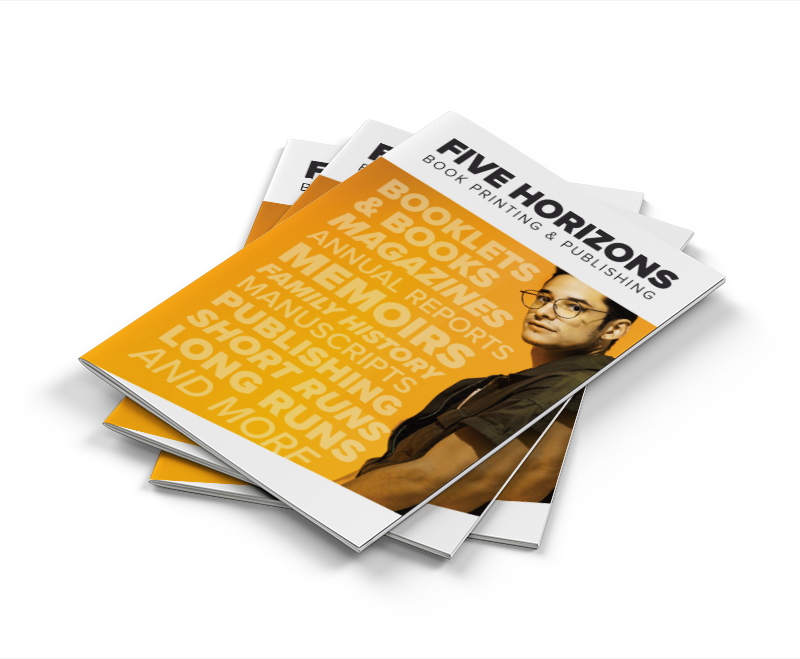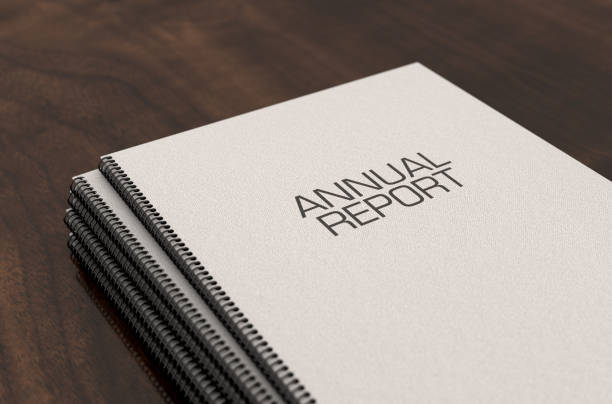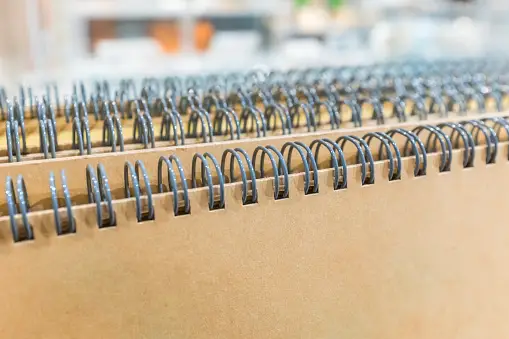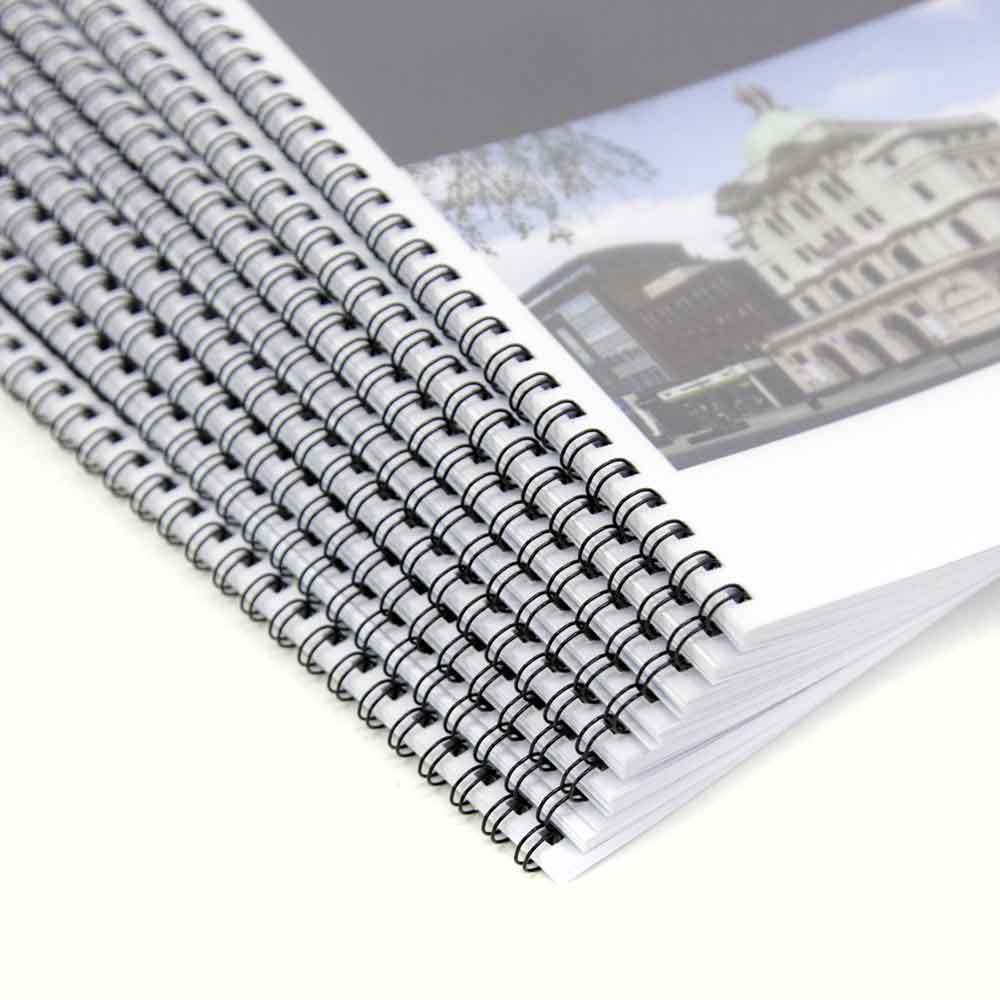






Welcome to our comprehensive guide on scaling your wire bound book printing for mass production. If you’re a self-published author or a printing company looking to expand your operations, this article is packed with valuable insights and strategies to help you succeed. We’ll cover everything from self-publishing and print-on-demand services to book aesthetics, material quality, customization options, efficient workflow, quality control, cost-effective strategies, distribution channels, and the environmental impact of book printing. Get ready to scale your book printing operations to new heights!
In today’s modern literature landscape, self-publishing has emerged as a powerful and viable option for authors to bring their works to the world. With the rise of self-publishing platforms and the advent of print-on-demand services, authors have more control over their content and higher earning potential than ever before.
Self-publishing has revolutionized the book publishing industry, providing authors with the opportunity to bypass traditional publishing houses and take matters into their own hands. This shift in the publishing landscape has brought several significant benefits to both authors and readers:

In conjunction with the rise of self-publishing, print-on-demand services have played a pivotal role in the distribution of self-published books. Print-on-demand allows authors to produce and distribute physical copies of their books whenever there is a demand for them, eliminating the need for large print runs and costly inventory storage.
Here’s how print-on-demand services work:
The print-on-demand model eliminates the financial risks associated with traditional printing methods, allowing authors to focus on writing and promoting their books. It also ensures that readers can easily access full colour self-published books without limitations on availability.
With the rapid growth of self-publishing and print-on-demand services, authors have more opportunities than ever to share their stories with the world. The combination of creative control, higher royalties, and accessible distribution channels has transformed the publishing landscape, empowering authors and enriching the literary world.
In the world of book design, aesthetics play a vital role in attracting readers and conveying the essence of your work. When it comes to wire bound books, the cover serves as the first point of contact and sets the tone for the entire reading experience. To make a lasting impression, it is crucial to choose the right cover that aligns with your book’s content and resonates with your target audience.
When selecting a cover for your wire bound book, consider the following factors:
While the cover sets the stage, the internal pages play a crucial role in delivering a visually pleasing reading experience. Consider the following design aspects for your wire bound book’s internal pages:
By carefully considering the aesthetics of both the cover and internal pages, you can create a wire bound book that not only captures the attention of readers but also enhances their overall reading experience.
When it comes to wire bound book printing, selecting the right material quality is crucial for creating a professional and durable finished product. In this section, we will explore two key aspects of material selection: evaluating paper types for your printed pages and considering multiple cover options and their impact on mass production.
Choosing the right paper type for your wire bound book is essential for achieving the desired look and feel. Different paper types offer varying weights, textures, and durability, so it’s important to evaluate your options carefully. Here are some commonly used paper types:
Ultimately, the paper type you choose should align with the content and style of your book, as well as your target audience’s preferences. Depending on your application, consider changing your front cover and back cover to an alternative – such as a clear actetate cover with a leather grain back. These are great options for presentation documents, annual reports and manual printing.
The cover of your wire bound book is the first thing readers see, making it a critical element to consider. The cover not only protects the pages but also plays a significant role in attracting readers and conveying the overall quality and style of the book. When selecting cover options, keep in mind the following considerations:
By carefully selecting the material quality for both the pages and cover of your wire bound book, you can enhance its overall appeal and durability. Take the time to evaluate different paper types and cover options, considering factors such as aesthetics, cost, and mass production requirements, to ensure your book meets the highest standards.

In the world of wire binding book printing, customization options play a crucial role in creating unique and captivating books. By exploring custom sizes and full bleed options, you can bring your vision to life with edge-to-edge printing and dimensions that are tailored to your specific needs.
If you want your wire binding books to stand out from the crowd, adding unique design elements is key. Whether it’s incorporating eye-catching graphics, illustrations, or special finishes, these elements can help differentiate your books in the market and capture the attention of readers.
When it comes to producing larger quantities of wire bound books, there are several important printing considerations to keep in mind. These considerations will help you ensure efficient production processes, cost optimization, and consistent quality across large print runs.
Firstly, selecting the right printing process is crucial. Mass printing wire bound books requires a printing method that can handle larger quantities without compromising on quality. Offset printing, for example, is known for its high-speed output and cost-effectiveness, making it an ideal choice for larger print runs.
Another important consideration is cost optimization. When printing in larger quantities, it’s essential to explore cost-saving strategies to maximize your budget. This may include bulk printing, negotiating discounts with printing vendors, or optimizing the printing workflow to minimize wastage and maximize efficiency.
Quality control is equally important when dealing with larger quantities. Consistency across all printed copies is key to maintaining customer satisfaction. Implementing robust quality control measures throughout the printing process, such as regular inspections and color management, will help ensure that every book meets the desired standards.
Furthermore, it’s important to consider the materials used in mass printing. Choosing durable and high-quality paper stocks and covers is essential to ensure that the books can withstand the rigors of distribution and handling. The use of eco-friendly materials may also be a consideration to meet the growing demand for sustainable printing practices.
By carefully considering these printing considerations for larger quantities, you can achieve efficient, cost-effective, and high-quality mass printing of wire bound books.
| Considerations for Larger Quantities | Benefits |
|---|---|
| Choosing the right printing process | High-speed output Cost-effectiveness |
| Cost optimization strategies | Bulk printing Negotiating discounts Workflow optimization |
| Quality control measures | Regular inspections Color management |
| Selection of durable materials | Withstand distribution and handling Eco-friendly options |
In order to achieve mass production of wire bound books, it is crucial to establish an efficient workflow. Streamlining the binding process and embracing automation are two key strategies that can greatly enhance productivity and minimize bottlenecks. These efforts can help ensure a smooth assembly and production process, allowing you to meet high demand and deliver books to your customers in a timely manner.
One of the most critical aspects of achieving an efficient workflow for mass production is optimizing the binding process. By carefully examining each step in the binding process, you can identify potential areas for improvement and implement strategies to streamline operations.
Automation plays a crucial role in boosting efficiency in the mass production of wire bound books. By leveraging automated equipment and techniques, you can significantly reduce manual labor and accelerate the production process.
By incorporating these strategies for efficient workflow and embracing automation in the mass production of wire bound books, you can optimize productivity, improve customer satisfaction, and position your business for long-term success in the competitive book printing industry.

In wire bound book production, maintaining quality control is paramount to ensure accurate and error-free printing. One essential aspect of quality control is establishing a standard for proofing and review. By implementing a standardized process, you can ensure that every book goes through a thorough review to catch any mistakes before it goes into mass production.
Creating a standard for proofing and review involves:
By consistently following a standardized proofing and review process, you can significantly reduce the chances of errors and improve the overall quality of your wire bound books.
Consistency is key when it comes to producing large print runs of wire bound books. Maintaining consistency ensures that each book meets the same high-quality standards throughout the entire print run, regardless of the quantity produced.
To achieve consistency:
These strategies will help you maintain a high level of consistency across large print runs, ensuring that every book meets your quality standards.
In this section, we will discuss cost-effective strategies for wire bound book printing that can help you maximize efficiency and minimize expenses. By implementing these strategies, you can ensure that your printing process remains budget-friendly without compromising on quality.
Bulk Printing: One of the most effective cost-saving measures is to opt for bulk printing. By printing a larger quantity of books at once, you can take advantage of economies of scale and reduce the overall printing cost per unit. This is especially beneficial for wire bound books that have a consistent demand.
Choosing Affordable Materials: Another way to cut down on costs is to select affordable materials for your wire bound books. While it is important to maintain quality, you can explore cost-effective options for paper and cover materials without compromising durability or aesthetics. This can significantly reduce your production expenses.
Optimizing Production Processes: Streamlining your production processes can have a significant impact on the cost-effectiveness of wire bound book printing. By evaluating and optimizing each step of the printing workflow, you can minimize wastage, reduce turnaround times, and increase overall efficiency. This can lead to significant cost savings in the long run.
By implementing these cost-effective strategies, you can ensure that your wire bound book printing remains budget-friendly while maintaining high-quality standards. Remember, efficient and optimized printing processes not only save money but also improve the overall productivity and profitability of your printing operations.
| Cost-Effective Strategies for Wire Bound Printing | |
|---|---|
| Bulk Printing | Opt for bulk printing to take advantage of economies of scale, reducing the overall printing cost per unit. |
| Choosing Affordable Materials | Select cost-effective options for paper and cover materials without compromising durability or aesthetics. |
| Optimizing Production Processes | Streamline and optimize each step of the printing workflow to minimize wastage, reduce turnaround times, and increase overall efficiency. |
When it comes to distributing your wire bound books, identifying potential retailers and online platforms is crucial. By strategically choosing distribution channels, you can effectively reach your target audience and maximize the reach of your books.
To start, research and identify retailers that align with your book’s genre, niche, and target audience. Look for bookstores, both independent and chain, that specialize in the genres or topics your wire bound books cover. Approach these retailers with a well-crafted pitch and samples of your books to demonstrate their potential appeal to their customers. Remember that Wire Bound Books lay flat when opened, perfect for a business that need this application.
Additionally, consider online platforms that cater to readers who prefer digital copies or enjoy shopping from the comfort of their homes. Popular online platforms such as Amazon, Barnes & Noble, and Book Depository offer opportunities to self-publish and distribute wire bound books, reaching a wide customer base worldwide.
In addition to individual retailers and online platforms, leveraging distribution networks can help you expand the reach of your wire bound books. Distribution networks act as intermediaries between publishers and retailers, making it easier to get your books in front of more potential buyers.
Consider partnering with a book distributor that specializes in distributing books to retailers and libraries. These distributors have established relationships with retailers and can help you reach a wider audience. It’s important to research and choose a distributor that has experience and connections in your book’s genre or niche.
Furthermore, explore opportunities to collaborate with wholesalers, who can help you distribute your books to various retailers on a larger scale. Wholesalers often have broader distribution networks and can help you expand your reach in both physical and online retail channels.
By strategically identifying potential retailers, online platforms, and leveraging distribution networks, you can effectively distribute your wire bound books and reach a larger audience.

In today’s world, where environmental consciousness is gaining momentum, it is crucial to consider the environmental impact of book printing. Sustainable printing practices and eco-friendly materials are becoming increasingly important in the book industry. By adopting these practices, we can minimize the negative effects of printing on the environment and contribute to a greener future.
When it comes to sustainable printing, several factors come into play. First and foremost, choosing eco-friendly materials for book production is essential. Opting for recycled or responsibly sourced paper can significantly reduce the environmental impact of book printing. Additionally, using vegetable-based inks and water-based coatings instead of petroleum-based alternatives can further minimize harm to the environment.
Minimizing waste is another crucial aspect of sustainable book printing. By optimizing the production process and managing inventory effectively, we can reduce the amount of waste generated during printing. Embracing print-on-demand technologies can also be a sustainable solution, as it allows for the production of books as and when they are needed, reducing the need for excessive stockpiling and wastage.
Furthermore, exploring digital printing options can significantly reduce the environmental footprint of book printing. Digital printing eliminates the need for large print runs, reducing energy consumption, and minimizing paper waste. This alternative can be particularly suitable for short-run book printing or print-on-demand services, allowing for more sustainable and efficient production methods.
There is a growing demand for environmentally conscious printing options among consumers. By incorporating sustainable printing practices into your book production, you can meet this demand and attract eco-conscious readers. The use of eco-friendly materials and adopting efficient waste management strategies can be valuable selling points for your books, setting them apart from conventional printing practices.
| Printing Practice | Environmental Impact | Advantages |
|---|---|---|
| Recycled Paper | Reduces deforestation and waste | Eco-friendly and appeals to environmentally conscious consumers |
| Vegetable-based Inks | Reduces toxicity and dependence on non-renewable resources | Environmentally friendly and produces vibrant colors |
| Water-based Coatings | Decreases reliance on harmful solvents and reduces air pollution | Offers a more sustainable alternative to traditional coatings |
| Print-on-demand | Minimizes waste by producing books as needed | Reduces inventory costs and enables efficient distribution |
| Digital Printing | Reduces energy consumption and paper waste | Enables short-run printing and customization |
By embracing sustainable printing practices, we can minimize the environmental impact of book printing while still delivering high-quality products. As stewards of the publishing industry, it is our responsibility to prioritize sustainable practices and contribute to a more environmentally conscious future.
In this section, we will showcase case studies of successful mass-produced wire bound books, highlighting their achievements in the market. These examples will provide valuable insights into effective strategies for wire bound book printing.
“The Hidden Gems of Australia” by Emma Mitchell
Emma Mitchell’s book, “The Hidden Gems of Australia,” became an instant success in the travel and tourism niche. The wire bound format allowed for easy navigation, while the high-quality paper showcased stunning photographs of Australia’s lesser-known destinations. This visually engaging book captured the attention of readers and quickly established itself as a must-have for travel enthusiasts.
“The Art of Minimalism” by Samantha Roberts
Samantha Roberts’ book, “The Art of Minimalism,” achieved great success with its wire bound format, which perfectly complemented the minimalist theme. The clean and elegant design, along with the use of sustainable materials, appealed to readers seeking a more mindful and clutter-free lifestyle. This book resonated with a wide audience and became a go-to guide for embracing simplicity.
Five Horizons Book Printing is a leading provider of wire bound book printing services. Their success can be attributed to several key strategies:
By analyzing the strategies used by Five Horizons Book Printing and studying the successes of these case studies, authors and publishers can gain valuable insights and inspiration for their own wire bound book printing ventures.
| Case Study | Book Title | Author | Key Success Factors |
|---|---|---|---|
| 1 | The Hidden Gems of Australia | Emma Mitchell | Stunning visuals, easy navigation, niche audience |
| 2 | The Art of Minimalism | Samantha Roberts | Minimalistic design, sustainable materials, broad appeal |
In conclusion, scaling wire bound book printing for mass production requires careful consideration of various factors. Throughout this article, we have discussed strategies and insights to help you achieve high-quality and efficient outcomes.
When it comes to self-publishing, embracing print-on-demand services can offer authors greater control and access to broader distribution networks. Additionally, prioritizing book aesthetics, such as choosing the right cover and internal page designs, is crucial for attracting readers and establishing a unique brand identity.
Material selection is another essential aspect of wire bound book printing. Evaluating different paper types and cover options allows you to strike a balance between cost, durability, and visual appeal. Moreover, embracing customization options like custom sizes and full bleed printing can add value and differentiate your books in the market.
To achieve efficient mass production, streamlining the workflow and leveraging automation in the binding and assembling processes can significantly increase productivity. Implementing robust quality control measures, such as creating a standard for proofing and review and ensuring consistency across large print runs, is vital to deliver flawless wire bound books.
Cost-effective strategies, including bulk printing, careful material selection, and optimizing production processes, can help you maximize efficiency while managing expenses. Finally, exploring various distribution channels and considering the environmental impact of your printing practices can ensure your wire bound books reach a wider audience while minimizing ecological harm.
By applying these insights and recommendations, you can successfully scale your wire bound book printing operations for mass production, achieving high-quality results and meeting the demands of a growing readership.
Self-publishing refers to the process of authors independently publishing their own books, without the involvement of traditional publishing houses. It has become significant in modern literature because it allows authors to retain creative control over their work and earn higher royalties compared to traditional publishing agreements.
Print-on-demand services are platforms that allow for the printing and distribution of books only when they are ordered. This eliminates the need for authors to invest in large print runs upfront and handle warehousing and distribution logistics. Instead, print-on-demand services handle the printing and shipping of books as orders are received, providing a cost-effective and efficient solution for self-published authors.
When selecting a cover for your wire bound books, consider factors such as material, design, and branding. Choose a cover material that is durable and visually appealing. Design your cover to reflect the content and target audience of your book. Incorporate your branding elements, such as your logo or color scheme, to create a consistent and recognizable brand identity.
When designing the internal pages of your wire bound book, focus on factors such as layout, typography, and illustrations. Ensure that the layout is visually appealing and reader-friendly, with ample white space and clear hierarchy of content. Choose typography that is legible and appropriate for your book’s genre. Incorporate high-quality illustrations or images that enhance and complement the text.
When selecting paper for your printed pages, consider factors such as weight, texture, and durability. Choose a paper weight that is suitable for your book’s intended use and target audience. Consider the texture of the paper, whether you prefer a smooth or textured finish. Ensure that the paper is durable enough to withstand handling and maintain its quality over time.
Multiple cover options can impact mass production in terms of cost, aesthetics, and durability. Printing different cover designs may increase production costs and complexity. However, offering multiple cover options can enhance the visual appeal of your books and cater to diverse reader preferences. Consider the balance between customization options and the practicality of mass production when deciding on multiple cover options.
Wire binding books offer several customization options. You can choose custom sizes, allowing for unique dimensions that suit your specific needs. Full bleed options enable edge-to-edge printing for a seamless and visually striking finish. Additionally, you can incorporate unique design elements such as foil stamping, embossing, or debossing to add visual interest and differentiate your books in the market.
When producing larger quantities of wire bound books, it is important to optimize printing processes for efficiency. Consider bulk printing to benefit from economies of scale. Utilize high-speed printing equipment to minimize production time. Implement automation where possible, such as automatic collating and trimming, to streamline the production process and increase throughput.
Achieving an efficient workflow in the mass production of wire bound books involves streamlining the binding process. Utilize automated equipment for wire binding to increase productivity and reduce manual labor. Implement standardized assembly techniques to ensure consistent and high-quality results. Emphasize proper training and organization to maintain a smooth workflow from printing to finishing.
To maintain quality control in wire bound book production, establish a standard for proofing and review. Implement a thorough quality assurance process to check for printing errors, color consistency, and page alignment. Conduct regular checks throughout the production process to identify and rectify any issues. Utilize color management tools and perform print quality checks to ensure consistent and high-quality results.
To achieve cost-effective wire bound book printing, consider bulk printing to take advantage of lower per-unit costs. Choose affordable materials and finishes that meet your quality requirements. Optimize production processes to minimize waste and maximize efficiency. Evaluate different suppliers and negotiate pricing to secure the best deals. Implement a lean inventory management system to avoid excessive stock and minimize storage costs.
To distribute your wire bound books and reach a wider audience, consider identifying potential retailers and online platforms that cater to your target audience. Approach local bookstores and libraries to stock your books. Utilize online marketplaces and e-commerce platforms to sell directly to customers. Leverage distribution networks and partnerships to expand the reach of your books in different regions or niche markets.
There are several sustainable printing practices you can adopt to minimize the environmental impact of book printing. Choose eco-friendly materials such as recycled or FSC-certified paper. Use vegetable-based inks instead of petroleum-based inks. Minimize waste by optimizing print runs and recycling paper scraps. Partner with environmentally conscious printers who have green certifications. Consider digital or print-on-demand options to eliminate excessive inventory and reduce waste.
Yes, here are some examples of successful mass-produced wire bound books: – “The Ultimate Guide to Wire Binding: A Comprehensive Handbook” by Jane Smith – “Inspire and Create: A Collection of Wire Binding Art Projects” by John Thompson – “The Essential Wire Binding Manual: Step-by-Step Instructions for Beginners” by Emily Davis These books have achieved success in their respective genres and showcase the possibilities of mass-produced wire bound books.
When scaling wire bound book printing for mass production, consider the importance of self-publishing and print-on-demand services in modern literature. Pay attention to the aesthetic aspects of your books, including the cover design and internal pages. Select high-quality materials for your printed pages, evaluate different paper types, and consider multiple cover options. Explore customization options to add uniqueness and value to your books. Focus on efficient workflow, maintain quality control, and implement cost-effective strategies. Identifying distribution channels and considering the environmental impact of book printing are also crucial. Learning from successful case studies can provide valuable insights. Ultimately, prioritize high-quality production and efficiency to scale your wire bound book printing operations.
Copyright © 2025 Five Horizons. All Rights Reserved.